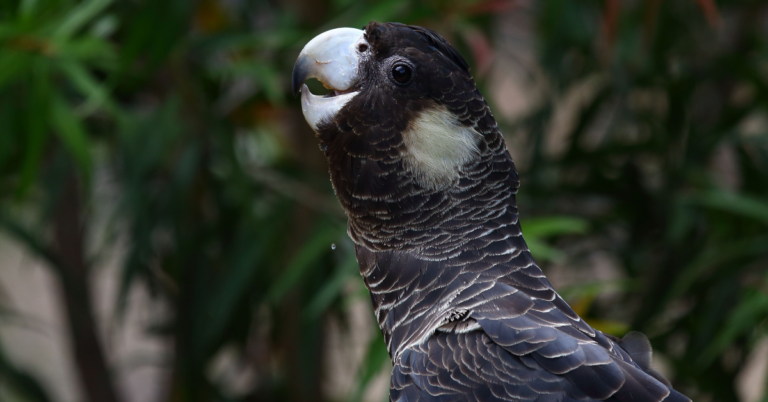Margaret River burrowing crayfish
The Margaret River burrowing crayfish (Engaewa pseudoreducta) is one of only 11 invertebrate species listed in Australia’s ‘Threatened Species Action Plan – 110 Priority Species’. There are five species of burrowing crayfish in Western Australia who all live in burrows rather than rivers, lakes or dams. They all have smaller tails than their freshwater equivalents and large claws for digging burrows up to four metres deep.
Though no bigger than your finger, burrowing crayfish contribute a great deal to life underground and are referred to as ‘ecosystem engineers’ because their burrows turn over and aerate the soil, providing air and nutrients to plant roots. (source)The Margaret River burrowing crayfish is critically endangered and threatened by habitat loss through land clearing, farm dam construction, groundwater extraction and the drying climate.
Hairy marron
The Hairy Marron (Cherax tenuimanus) only occurs in fresh water in and near Margaret River in Our South West. It is similar in appearance and size to the more common and well-recognised smooth marron. It’s only distinguishable by a distinctive cover of short, bristled hairs on its head, down to its thorax.
The most significant threat to the species is hybridisation with smooth marron. It’s not always easy to tell a smooth marron and a hairy marron apart – particularly as the hairs are not obvious on juveniles. This makes the critically endangered hairy marron also vulnerable to fishing.

Margaret River burrowing crayfish. Photo Credit: Steve Tribbeck

Margaret River burrowing crayfish. Photo credit: Steve Tribbeck.

Hairy marron. Illustration © R.Swainston/anima.Fish
The problem
According to ‘Australia: State of the Environment Report 2021‘ Australia continues to have one of the highest rates of species decline among countries in the Organisation for Economic Co-operation and Development (OECD).
Over 100 Australian species are listed as ‘Extinct’ or ‘Extinct in the Wild’ under Australian national, state or territory legislation. Our biodiversity continues to be in decline with ramifications for human health, wellbeing and economic prosperity.
The Margaret River burrowing crayfish has been listed among 110 species flagged for priority attention in the Australian Government’s Threatened Species Action Plan 2022-2032: Towards Zero Extinctions.
Both species are critically endangered and South West NRM is committed to supporting the Australian Government in its objective of ensuring no new extinctions to maintain our biodiversity.
What we’re doing about it
The South West NRM region forms a significant part of an internationally recognised ‘Global Biodiversity Hotspot’. These are identified as the most biologically rich yet most threatened places on Earth. There are 36 of these hotspots around the world, with just two located in Australia.
According to Conservation International, success in conserving species in these hotspots can have enormous impact on securing our global biodiversity.
With all of this in mind, South West NRM developed its “Curtailing the Crash of Critically Endangered Crustaceans in the South West Capes Region” project.
With funding support received from the Australian Government’s Natural Heritage Trust, work with our partners on the four-year project is commencing in 2024.
Margaret River burrowing crayfish
Through fauna surveys and habitat protection measures, we will attempt to identify at least 3 currently unknown populations of Margaret River burrowing crayfish.
An eDNA assay developed by the Department of Biodiversity, Conservation and Attractions (DBCA) as a result of a previous SWNRM project, will be used to survey for MRBC burrows in potential habitat on properties surrounding known populations of the species. Confirmed populations will be protected through fencing to exclude livestock and weed and feral animal control where needed.
You can read a transcript of our interview on ABC Radio South West about this work here.
Hairy marron
In partnership with DBCA, Hairy Marron bred at Perth Zoo as part of the existing recovery program may be released in suitable locations to work towards establishing new wild populations.
Fauna surveys will be undertaken to search for populations of hairy marron in locations surrounding the existing known habitat and protection measures implemented to reduce smooth marron interbreeding.
In collaboration with DBCA, research will also be conducted on appropriate processes for release of hairy marron to inform future conservation efforts.
5ha of hairy marron habitat will be protected from grazing and habitat degradation.

Hairy marron illustrations © R.Swainston/anima.Fish

Smooth marron illustrations © R.Swainston/anima.Fish
Early in 2025, as we commenced work on this project, the team from 7News Regional spoke to our CEO Dr Manda Page about the project.
This short film created back in 2011 and narrated by ABC South Australia’s Ann Jones presents 20 years of research gathered by the Murdoch University Centre for Fish and Fisheries. The film also depicts the iconic South West freshwater environment and the pressures these crayfish face like climate change, increased abstraction and introduction of feral fish and crayfish species. The native freshwater crayfishes of the South West of Western Australia are completely endemic meaning they are found nowhere else on earth and are a result of millions of years of isolation.
Links to our previous work
Project Partners
This project is funded by the Australian Government’s Natural Heritage Trust and delivered by South West NRM, a member of the Commonwealth Regional Delivery Partners panel.










